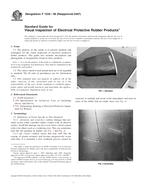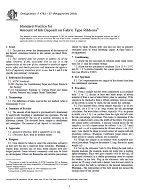1.1 These product consistency test methods A and B evaluate the chemical durability of homogeneous and devitrified glasses by measuring the concentrations of the chemical species released from a crushed glass to a test solution.
1.1.1 Test Method A is a seven-day crushed glass durability test performed at 90 + 2°C in a leachant of ASTM-Type I water. The test method is static and conducted in stainless steel vessels. Test Method A can specifically be used to evaluate whether the durability and elemental release characteristics of waste glasses have been consistently controlled during production. This test method is applicable to radioactive and simulated waste glasses.
1.1.2 Test Method B is a crushed glass durability test that allows testing of water glasses at varying test durations, test temperatures, ratios of glass surface area ( ) to leachant volume ( ), and leachant types. This test method is static and can be conducted in stainless steel or PFA TFE-fluorocarbon vessels, or both. Test Method B can specifically be used to evaluate the relative durability characteristics of homogeneous or devitrified glasses, or both. This test method is applicable to radioactive and simulated waste glasses. Test Method B cannot be used as a consistency test for production of high level radioactive waste glass.
1.2 These test methods must be performed in accordance with all quality assurance requirements for acceptance of the data.
1.3 This standard does not purport to address all of the safety concerns, if any, associated with its use. It is the responsibility of the user of this standard to establish appropriate safety and health practices and determine the applicability of regulatory limitations prior to use.
Product Details
- Published:
- 10/10/1997
- Number of Pages:
- 18
- File Size:
- 1 file , 170 KB


